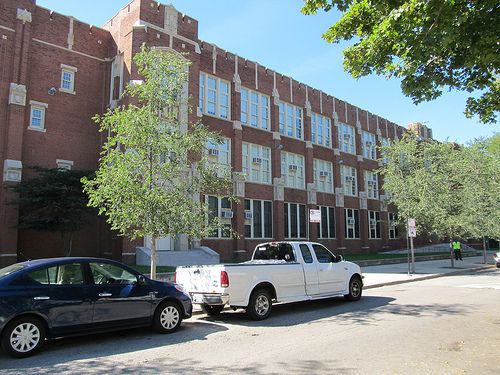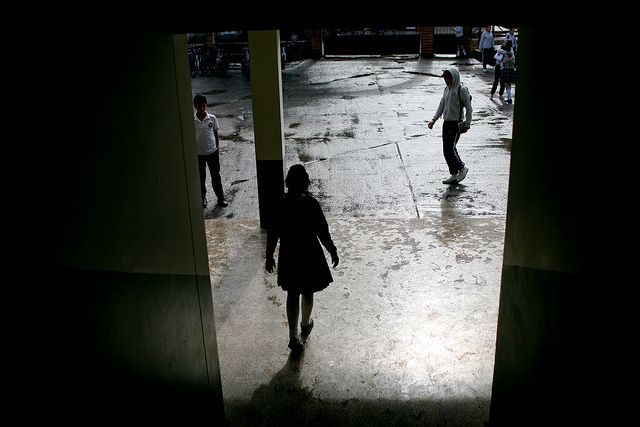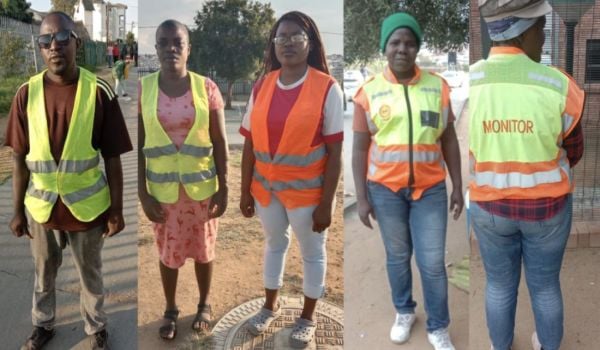Like so many high school fights, this one began as a dispute between two students. Yet instead of a few black eyes and maybe a suspension, it ended in mob violence and the death of 16-year-old Derrion Albert.
That was in September 2009, the same year that Elizabeth Dozier became principle of Fenger High School, where Albert was a student. It was also the same year that Robert Spicer joined the Fenger staff to help build the school’s peacemaking capacity.
Of the more than 500 Chicago youth who have been killed in the last four years, Albert’s death stands out. Mention his name today, and many Chicagoans will know exactly whom you’re talking about. This is partially due to the large number of young people involved in the incident. But the main reason is that the killing was recorded on a bystander’s cell phone, resulting in a video that caught fire and gained national attention.
For some, the video glorified the violence of the incident, further cementing the idea that Fenger High School is no place to send your child. For others, it served as a painful call to get involved in the school’s future and to make whatever investments were at their disposal to make Fenger a safer place.
By any measure, these investments have paid off.
Here are the facts: Fenger is a school with about 500 students, located in Chicago’s Roseland neighborhood, a South Side area where President Obama did much of his early organizing work. The school has often been on academic probation and student safety was an issue well before Albert’s life was taken.
Yet since then, the school has undergone a serious transformation. Student misconducts have dropped more than 60 percent. The dropout rate has been reduced from 20 percent to 5 percent. And the freshman on-track rates, a main indicator of whether students are poised to graduate in four years, have soared from 40 percent three years ago to 75 percent in 2012.
While the student demographics have stayed basically the same, numerous organizations have entered the scene to help, guided by the leadership of Dozier and other Fenger catalysts like Spicer. Meanwhile, Attorney General Eric Holder and Department of Education head Arne Duncan, following a visit in October 2009, have helped direct substantial resources toward the school.
Amid all these interventions, there has been a distinct philosophical shift within Fenger, one that Spicer sees as the key to the school’s successful transformation. Fenger has moved almost completely to a restorative justice paradigm, so that school safety is now pursued and achieved in ways that were nonexistent in 2009. Violence is prevented through peacemaking circles, student conflicts are resolved by peer jurors, victims and offenders now sit down together after an incident, and families are brought in to join restorative conferences about the underlying causes of student misbehavior.
Spicer can recall stories of peacemaking circles with everyone from students to teachers and administrators to family members. He has even helped to train the school security guards, who now play a crucial role in guiding, supporting and mentoring the students, deescalating situations, and supporting other peace leaders.

Fenger High School. Credit: Flickr user Zol87
“When you boil everything down, peace is about relationship building,” said Spicer, adding that “young people are going to make mistakes, so we have to be there to teach them.”
Early last month I visited Spicer at Fenger. About half an hour after our interview began, we were joined by six of the peer jurors at the school, who shared their own leadership journeys at Fenger. Like Spicer and Dozier, they also came to the school in 2009.
Hannah, one of Fenger’s few Latina students, began by saying that the peer jurors have helped fellow students learn they can still be friends with someone after a conflict. She said they have taught many students how to deescalate fights and have been “changing people’s minds about how to approach problems.”
Like Derrius, Geneva and Latreana were both looking for after-school activities when they came to Fenger. Since starting with peer jury, they have learned a lot. Latreana feels she is now able “to look deeper at people, to see the beauty within them.” She said she has also seen the school grow more peaceful as a whole, explaining that, “freshman year was rough, with a lot more fights and lockdowns. Now there is a lot more structure in the school.”
Mileak comes to the school from Beverly, a neighborhood just west of Roseland. When he started traveling to Fenger, he often feared being shot. On his first day of school he saw a drug deal and other behaviors that did little to allay his fears. But since 2009, Mileak said his peers have been learning how to be peaceful. Earlier this semester he saw a sophomore interrupt a fight that was about to happen, successfully convincing the involved parties to talk things out.
Like Fenger’s dramatically reduced student conflicts, these stories reveal how very possible it is to change the climate of urban public schools. With the right outside inspiration, students jumped at the chance to play a leadership role in their school, helping to rewrite Fenger’s history after Derrion’s death.
And as the Fenger case shows, restorative justice practices can be a real, tangible vehicle for making city schools better by offering a pathway to peace for students willing to learn. It’s our job to remember there are students like these all over urban America, waiting for their chance to play a bigger role in their surroundings.
Ryan Lugalia-Hollon has worked at major educational institutions across the City of Chicago, including The Field Museum, Northwestern University and the University of Illinois at Chicago. He currently serves as a Justice Fellow for the Institute on Public Safety and Social Justice at the Adler School of Professional Psychology, and is a founding board member of the Community Justice for Youth Institute.
Ryan Lugalia-Hollon has worked in youth development for over twenty years, including restorative justice, violence prevention, and trauma-informed care efforts in Chicago. He holds a PhD and Masters in Urban Planning and Policy from the University of Illinois at Chicago. He currently leads an education network in San Antonio, Texas. He is a Next City Vanguard.















